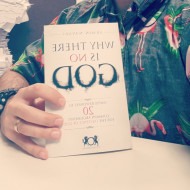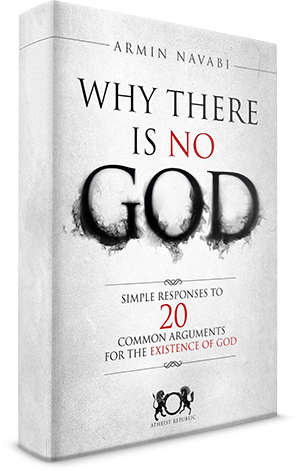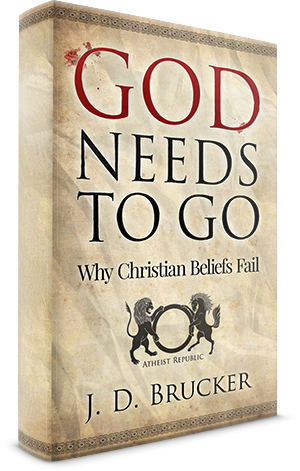
“It is natural that those who personally have traversed such an experience should carry away a feeling of its being a miracle rather than a natural process.” – William James, The Varieties of Religious Experience
The Problem
What if every single time someone had a near-death experience—regardless of their culture or religious views—they returned to us describing the same experience and the same place? Surely, even the most skeptical of us nonbelievers would be inclined to at least reconsider some of our philosophical suppositions regarding death and the afterlife.
In fact, near-death experiences vary considerably both from person to person and from culture to culture. Some people have out of body experiences, but others don’t. Some find themselves gravitating towards a light at the end of a tunnel; others experience nothing of the sort. Sometimes they meet religious figures, or deceased relatives, and yet others meet Elvis.
Perhaps more importantly, the actual places that are being described by these people are strikingly different from one another. This is not only true when it comes to NDEs from different cultures, but even from those coming from the same culture, as we’ll soon see.
Nevertheless, within NDE literature, it is often argued that overall there is continuity between these near death experiences – that the phenomenon is essentially universal. This is known as the invariance hypothesis, referring to the notion that NDEs are invariant across cultures. To be clear, every serious mind engaged in this topic does acknowledge the obvious discordance between the many NDEs of the world, but it is argued that this discordance is actually due to the subjective nature of people having to retell and describe these experiences to other people. So when a Christian sees a being of light, he may be inclined to later describe this being as Jesus or an angel, whereas an atheist that has the very same experience may describe it as the more religiously neutral, being of light.
Jody Long, a researcher from NDERF.org, puts it like this: “One of the near-death experience truths is that each person integrates their near-death experience into their own pre-existing belief system.”1 At face value, this explanation may seem somewhat plausible; perhaps these reports of the afterlife just seem inconsistent to us due to the fact that everyone’s descriptions are inevitably compromised by their personal beliefs and biases. Dr. Raymond Moody, who coined the very phrase near-death experience, used the analogy of ten different people visiting France.2 Clearly, he argues, their experience would vary from person to person. Some might marvel at the beautiful architecture for example, while others might spend most of their time dining on the scrumptious cuisine. The mere fact that the descriptions they give afterwards are not consistent with one another does not necessarily mean they didn’t all really go to France.
However, this explanation just doesn’t work for all near-death experiences. This is due to the simple fact that some of the differences between these accounts are far too great and specific for any such generalizations to be made. To continue with Moody’s France analogy, the situation is more like some of these people are describing Paris, France, whereas others seemed to be talking about Las Vegas, Nevada.
Neurosurgeons, butterflies, & Jesus
Two of the most famous NDEs of recent times are those of Dr. Eben Alexander and Colton Burpto. Alexander’s NDE is described in his bestselling and notsomodestly titled, Proof of Heaven, whereas Burpto’s is described in his father’s book, Heaven is for Real. Alexander, a seemingly charming, intelligent, and successful neurosurgeon, managed to contract a wicked case of acute gramnegative bacterial meningitis and descended into a severe comatose state.3 At some point of this coma, he then awoke, without memory, perception of a body, or any sense of an identity whatsoever. After some inscrutable amount of time, he began to slowly differentiate from his surroundings, and he seemed to be stuck or submerged in a thick darkness, akin to being buried in a mud of some kind. Eventually, Alexander became aware of a dazzling display of light and traveled upwards through a brilliantly lit opening, leaving what he has dubbed the “Realm of the Earthworm’s-Eye View.”3 He then emerged into heaven, which is described as a magnificently beautiful countryside complete with trees, fields, streams, waterfalls, people, and yes, even dogs (but apparently no cats ☹). At some point of this, Alexander rather nonchalantly noticed that he was actually sitting on the wing of a giant butterfly and moreover, that he wasn’t alone. With him was a person that he later recognized as a sibling that passed away before they ever had the chance to meet each other, and it is in fact this, not the supposed lack of cortical functioning he espouses elsewhere, that finally convinced Eben of the veridicality of his experience.3
Alexander also encountered God, (or “Om” as he puts it) who went on to give him some disappointedly cliché information, including the idea that free will is somehow justification for the existence of evil (God is apparently unaware of the philosophical distinction between human evil and natural evil) and the idea that causality works differently outside of our universe.
Now contrast Dr. Alexander’s experience with that of Colton Burpo’s, a place where everyone has wings and no one gets old.4 Colton’s appendix burst and he consequently had to undergo a lifesaving surgery. At some point of this, Colton’s spirit reportedly left his body enabling him to observe both his operation and his parents as they were holed up in separate rooms of the hospital. He then traveled to heaven, which he describes as kind of city made of something “like gold or silver.”4 Colton recalls sitting on Jesus’ lap, who has brown hair, a beard, beautiful eyes, wears a white robe, purple sash, gold crown, and has a rainbow colored horse. Colton also met his deceased grandfather, who had died before Colton was born, as well as his sister, who had been miscarried, John the Baptist, King David, Samson, and even the Holy Spirit, who allegedly “is kind of blue.”4 Colton describes witnessing the throne of God, where Jesus was sitting on the right hand side of his father, an inconceivably large being that just “really, really loves us.”4
Now this all sounds fantastic of course. After all, who in their right mind wouldn’t want a pair of wings? But what’s important for our purposes is that this is all in incredibly stark contrast with Dr. Alexander’s experience. In Dr. Alexander’s NDE, after he got the hang of it, he could willfully control the events and things that were happening to him. This is glaringly absent in little Colton’s NDE. Colton had a classic out of body experience, but Alexander woke up already separate from his physical body. For that matter, Colton actually had a body in his NDE, and moreover had no trouble remembering his identity. He also describes heaven as a golden city, as opposed to Alexander’s descriptions of a lush and vibrant countryside. Nor, it saddens me to say, did little Colton get the opportunity to ride any giant butterflies.
What’s more, the two experiences are different in ways that seem to hearken back to the physical brains producing them, hence, Colton’s NDE includes Jesus Christ riding a rainbow colored horse and even assigning the little dude homework. But even more revealing here is how less distinctly religious Alexander’s NDE is compared to Colton’s, the son of a pastor. Colton experienced a vision in heaven that showed him the apocalyptic battle that will happen in the future between good and evil, yet Alexander was not given this pertinent information. In Colton’s heaven, everyone had wings and halos over their heads and there was a host of wellknown Christian figures, none of which is described by Alexander. Is it really just coincidental that many of the features in Colton’s NDE are curiously reminiscent of Children’s illustrated bibles, church services, and Sunday school, and that Alexander’s NDE lacks these features?
Then there’s God. Alexander experienced a God that is not only bodiless, but an all encompassing presence that speaks via telepathy, yet Colton essentially just experienced a giant humanoidlike figure that sat on an enormous throne. Nor does Alexander affirm the existence of a Christian Trinity, which little Colton was apparently made well aware of during his visit to the pearly gates.
These differences are not merely the harmless byproducts of subjectivity. Even if we were to somehow whittle away the conflicting interests and biases of Eben and Colton, we would not suddenly have matching and congruent experiences. Their accounts are different enough that they cannot both be true; either one of them, or both of them, are inauthentic. I call this the problem of incongruence and it becomes much more apparent the moment you consider near-death accounts coming from outside of our American and other Western cultures.
Non-Western Near-Death Experiences
The best documented NDEs of this nature so far come from the predominantly Hindu country, India; the following two brief accounts can be seen as characteristic of these in general. A man by the name of Chhajju Bania became deathly ill with a fever to the extent that his family members presumed him to be dead and began preparing his body for the customary cremation.1 Much to everyone’s surprise however, he suddenly became conscious and proceeded to tell his family that he had just traveled to the world beyond. He describes being held by “black messengers” who then placed him next to the Hindu god, Yamraj.1 Yamraj was wearing yellow clothes, had a white beard, and was sitting on a large chair. Chhajju then noticed an old lady with a pen and a group of clerks sitting amidst a pile of books and records overseeing the heavenly registration process. One of the said clerks called out that this is Chhajju Bania the trader, not Chhajju Bania the potter. Chhajju the trader expressed his desire to stay, but was ultimately sent back to live out the remainder of his earthly life in spite of his protests.
Another man describes a harrowing experience where he was taken by 10 people.1 After trying to escape from them, they responded by cutting his legs off at the knees—thereby effectively preventing any subsequent escapes. At this point he was carried to a place with forty to fifty people sitting around at tables, where it was again discovered that his name wasn’t on “the papers,”1 and therefore that he had to return to his life.
Generally speaking, there are several noteworthy differences between these Indian NDEs and a typical Western NDE. Out of body experiences for instance, which have become virtually synonymous with NDEs in the West, rarely seem to occur in Indian cases5 nor does the sensation of being in a tunnel.6 Also, there are nowhere near as many of the transcendental elements so ubiquitous in the Western, in particular Christian, near-death accounts.5 In other words, the near-death experiences in India appear to be much worldlier.
Another interesting difference concerns the experience of a so called life review. In the West, people usually describe this as a three-dimensional, colored, panoramic experience, where one witnesses the entirety of their life and all of its effects on the world and people around them.2 However, in India they either have no life review at all or it is read aloud to them from the Akashic Record.6
There is also a general reluctance on the part of Indian people when it comes to returning back to the land of the living, whereas Westerners more often than not (at least eventually) want to return to their earthly lives.5 With this in mind, and as we saw, NDEs in India often entail a sort of afterlife immigration department, where it is eventually discovered that a mistake has been made: this person was not the person that was supposed to die and therefore must return back to their earthly life. They are then, usually against their will, rather unceremoniously sent back to our world. Intriguingly, this peculiar situation does not seem to be described in Western NDEs.5 Rather, Westerners tend to either report that they chose to come back due to their families and/or things they still want to do in life, or sometimes they don’t have an explanation for their return at all.
Again, it’s simply not possible to explain away the inconsistencies between all these accounts by means of interpretation. Beyond India, we have recorded NDEs from all over the globe and spanning most of recorded history and not surprisingly, they are all different in their own unique and culturally specific ways. Above all, this much is clear: there is a problem here for people that want to use NDEs as evidence of an objective afterlife: these accounts do not actually seem to be describing the same place.
Imagine again for a moment how different this situation would be if everyone that had NDEs came back with congruent accounts; it’s impossible to exaggerate just how powerful of an argument this would be for the existence of an afterlife. If say, fundamentalist Muslims, atheists, Hindus and so on, all returned from a distinctly Christian heaven, speaking of Jesus Christ and the Holy Trinity. Instead, what we seem to have is exactly what we would expect if NDEs were indeed just the inner workings of the brain. Christians see the figure of Jesus, Hindus see Yamraj and his minions, Children’s NDEs often seem much more simplistic than those of adults, etc. If NDEs are influenced by the beliefs that people have, as well as their perceptions of the world around them (both of which are clearly mediated by the physical brain) isn’t it therefore reasonable for us to infer that they are indeed products of the physical brain as well?
References:
- Williams, Kevin. 2014. “Near-Death Experiences of Hindus.” Neardeath.com
- Moody, Raymond. 1988. The Light Beyond. New York: Bantam Books
- Alexander, Eben. 2012. Proof of Heaven. New York: Simon & Schuster
- Burpto, Todd. 2010. Heaven is for Real. Nashville, Tennessee: Thomas Nelson
- Groth-Marnat, Gary. 1994. “CROSSCULTURAL PERSPECTIVES ON THE NEAR-DEATH-EXPERIENCE.” Australian Parapsychological Review. November, pp. 711
- Pasricha, Satwant. 1993. “A Systematic Survey of Near-Death Experiences of Near-Death Experiences in South India.” Journal of Scientific Exploration, Vol. 7, No. 2, pp. 161171.
Photo Credit: Mike Kniec





























